A Healing Environment through Interior Design
July 11, 2023Post Tagged in
|
When you think of interior design, what is the first thing you imagine? Funky wallpaper, vibrant and modern couches, maybe a groovy carpet in an upscale corporate office? Interior design goes far beyond bringing a certain ‘vibe’ to a space, especially in a healthcare environment. |
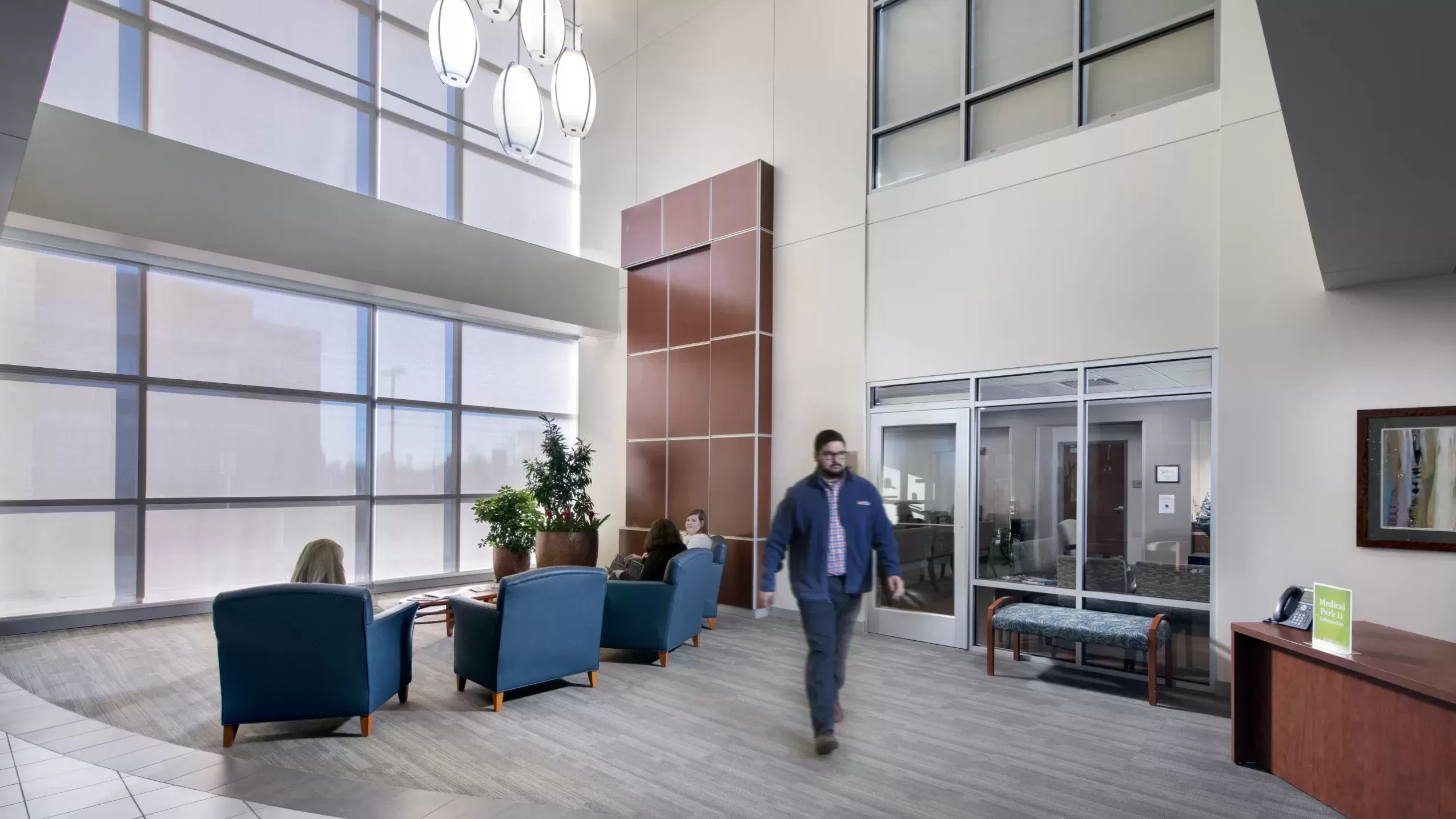
|

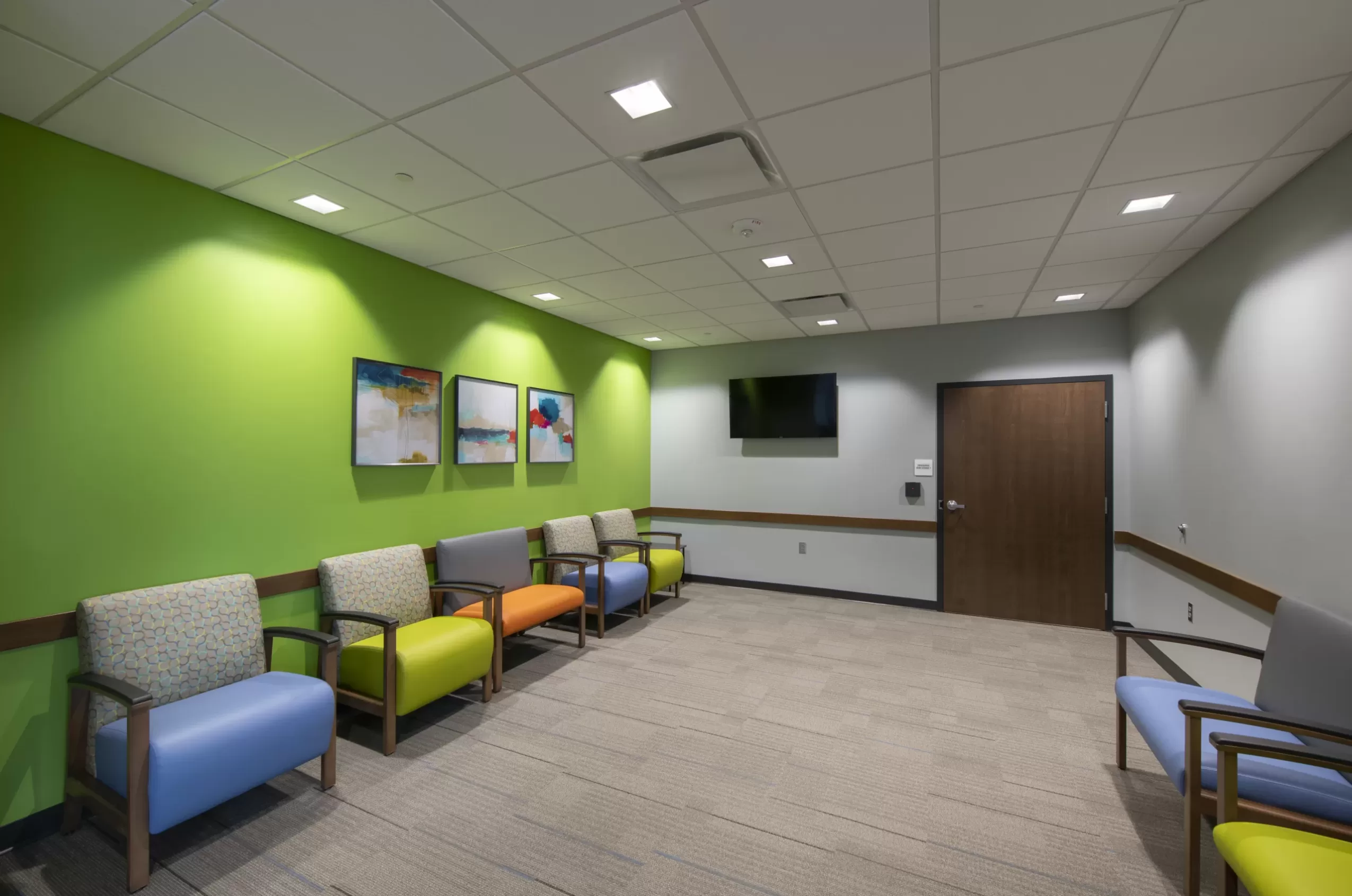
|
Utilizing certain interior design elements in a healthcare setting is a great way to promote a warm, inviting, healing environment for both caregivers and patients. Design choices can help humanize a space that can be otherwise stressful, sometimes even cold and uninviting. |

|
An example of balancing both efficiency and a comfortable environment is the position of the care team, often placed in a central location to allow the staff to access their patients quickly and effectively. However, this often leaves the staff spending many hours in windowless spaces with no natural light, as the centralized staff locations aren’t usually on exterior walls. Interior designers can make all the difference in these areas, adding clerestory windows (windows that are located near the top of a wall to allow in natural light), vibrant, warm finishes, wall graphics, and interesting lighting. All of these interior design elements can help improve the positivity, energy, and overall performance of the staff. |
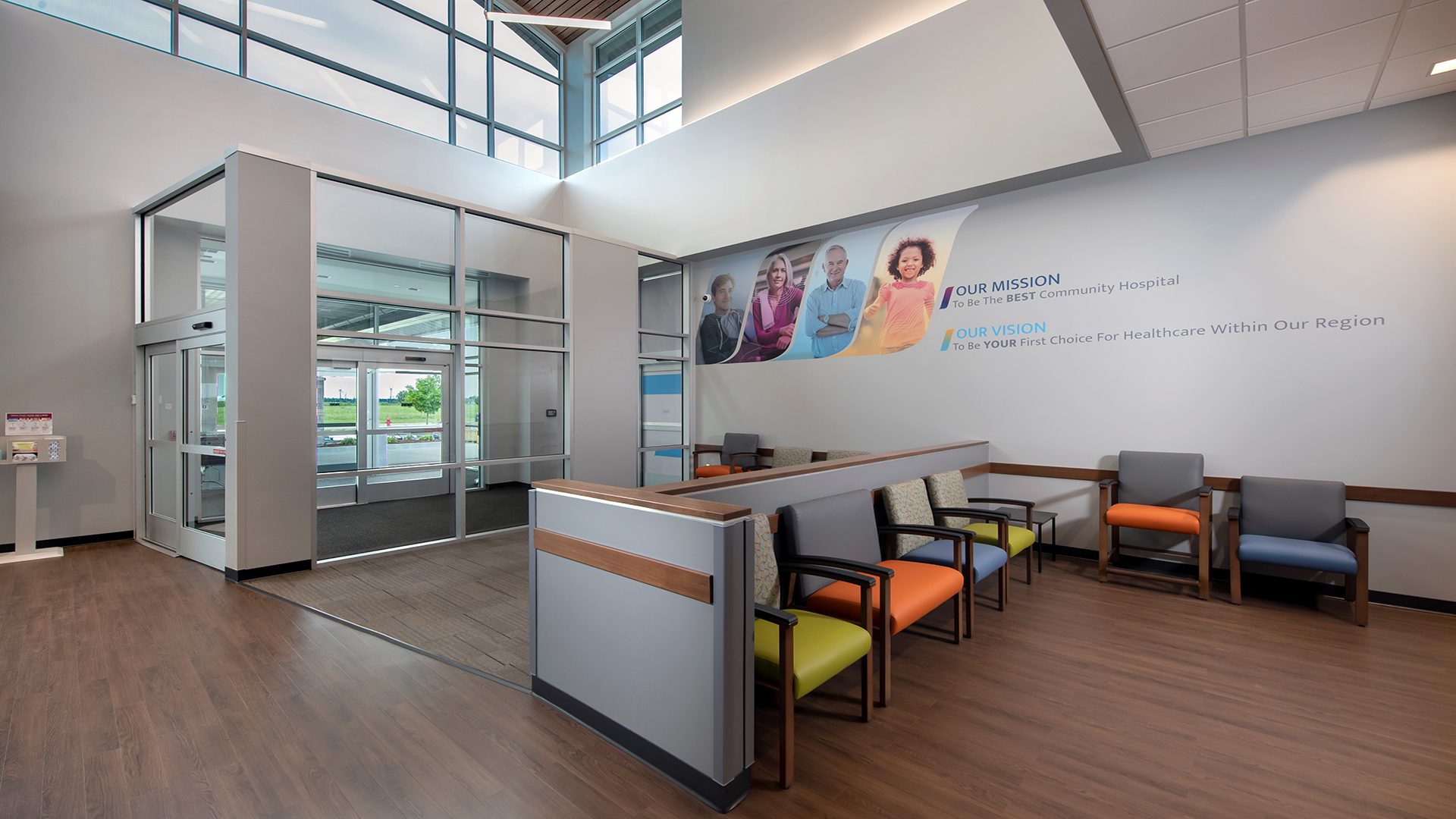
|

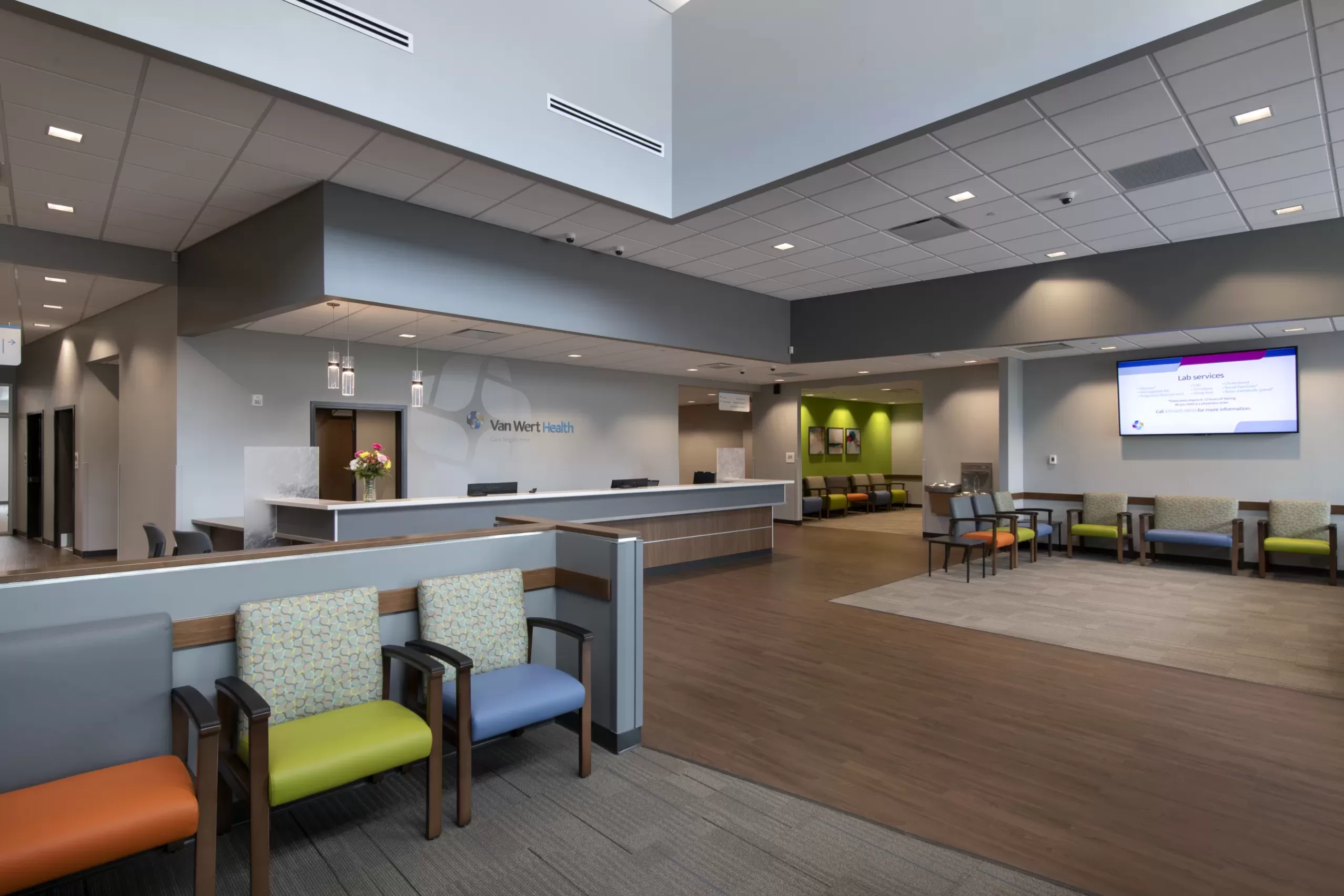
|
Examples of specific design elements are the Van Wert Health North finishes, graphics, and architectural features used to enhance the patient experience in the waiting area and exam rooms. Vibrant finishes and community-focused branding in the waiting area create an energetic and patient-focused atmosphere. Exam rooms are separated with color blocking, creating an easy and comfortable way for patients to navigate the space. The distinguished finishes serve a dual purpose by providing wayfinding to improve efficiency for patient visits, and making the somewhat sterile environment of exam rooms and labs more inviting and personable. |

|
Design elements like natural light, warm wood tones, and energetic finishes allow for a more inviting and memorable experience for patients. Colors and textures can have a huge impact in a healthcare environment. Promoting these design elements and finishes can help soften the sometimes institutional-like environment. |
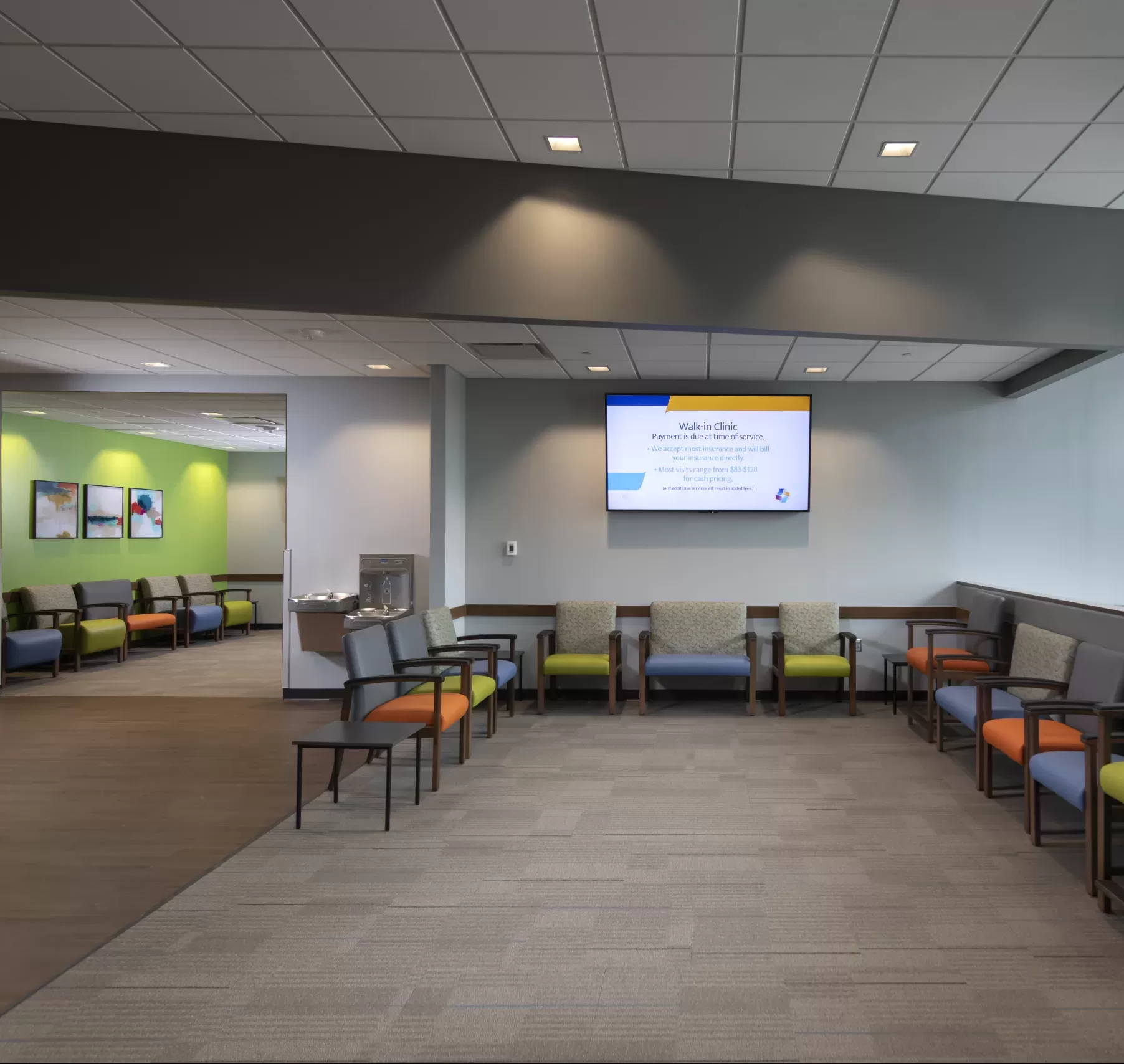
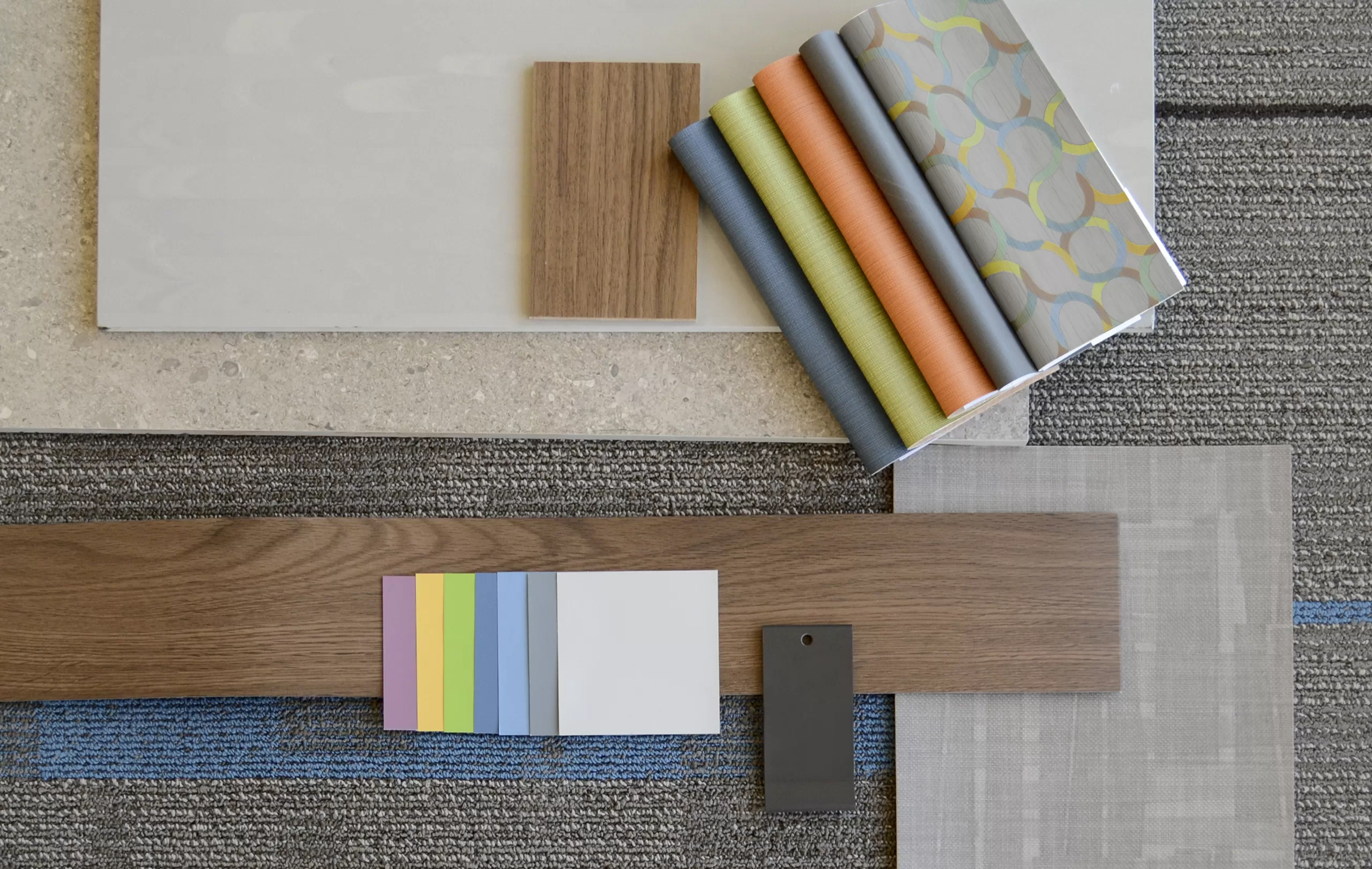
|


The shift in the interior design approach in healthcare facilities is allowing what used to be a typically sterile and clinical environment to move into warm, inviting, and enjoyable spaces for providers and patients. An efficient and durable healthcare design should be equal to a healing and personable design. So, when you think of fun and funky interior design, you may not be far off these days applying that to healthcare design. Changing the way these spaces feel through interior elements can help medical professionals provide the best possible care for patients.